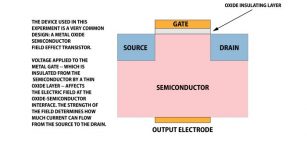Laser Drills Elongated And Crack-Free Micro-Holes In Glass
Eddie Gonzales Jr. – MessageToEagle.com – The research group of laser-matter interaction at the Institute of Intense Lasers and Applications (CELIA) at the University of Bordeaux, France, has explored a new glass micro-drilling method using a femtosecond laser in GHz-burst mode.
Microscope images of the holes drilled at an inter-burst repetition rate of 1 kHz, with bursts of 50 pulses at 1 GHz and drilling times from 20 ms to 100 ms, in sodalime with a burst fluence of 52 J cm−2 (a), and in fused silica with a burst fluence of 136 J cm−2 (b). Image credit: Institute of Intense Lasers and Applications (CELIA) at the University of Bordeaux, France
Researchers used a femtosecond laser from Amplitude operating in the GHz-burst regime to study a new glass micromachining method which allows for drilling taper-free, elongated holes with smooth inner walls without any cracks in the glass.
Usually, laser drilling with standard single femtosecond pulses results in tapered holes of strongly limited length and rough inner surface.
This new laser-matter interaction regime permits to directly drill holes of high aspect ratio in one single step without any chemical etching.
The choice of the laser-burst parameters reveals to be very important in order to achieve an outstanding micromachining quality of the machined structures.
The femtosecond laser GHz-burst mode could pave the way for new applications such as microelectronics where silicon interposers are likely to be replaced by glass interposers.
Research is published in the journal International Journal of Extreme Manufacturing,
Press release source – EurekAlert
Written by Eddie Gonzales Jr. – MessageToEagle.com Staff











